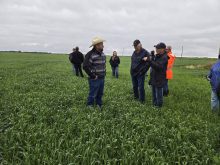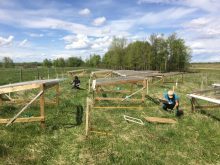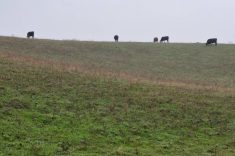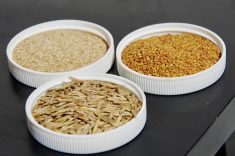“It’s a lot less labour intensive.”
– REJEAN PICARD, MAFRI
Let your cattle graze on pasture all year round. In winter, give them a hay bale buffet.
Bale grazing beef cattle during the winter is being promoted as a good way for producers to save time, work and money by letting animals feed themselves. Even more important, it can greatly improve soil fertility.
A recent Manitoba Agriculture, Food and Rural Initiatives project has found that bale grazing can increase soil nitrogen levels in pastures by as much as 10 times.
Read Also
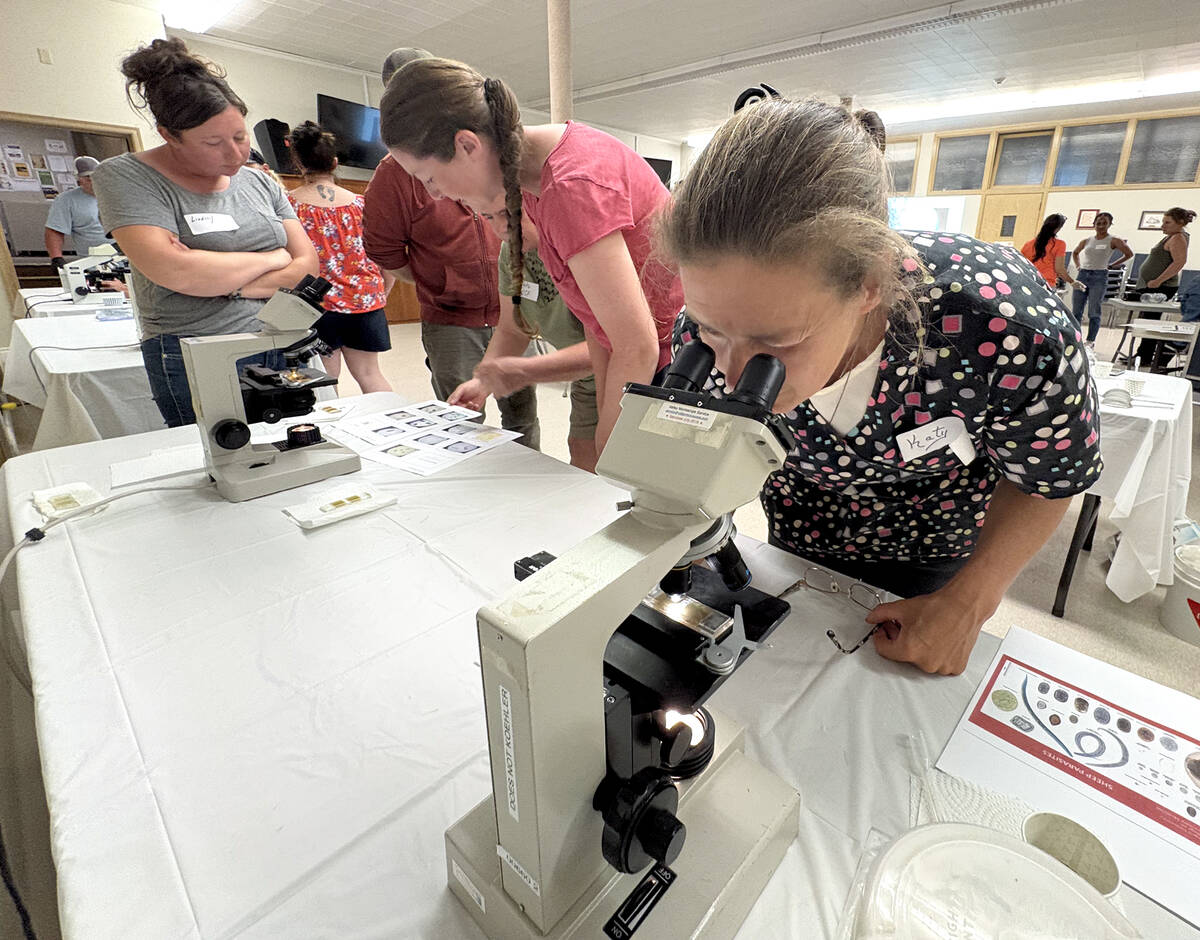
Smart deworming for sheep starts with individual fecal egg counts
Fecal egg count tests are one step to managing dewormer resistance and managing sheep parasites on Canadian sheep farms to maintain flock health.
That’s because cattle manure and hay residue get spread out over the land, increasing the future production of forage crops.
Significantly, the cattle do all the work themselves without the need to confine them over winter, feed them, provide them with bedding and haul their manure from the feedlot to the field in spring.
“It’s a lot less labour intensive,” said Rejean Picard, a MAFRI farm production adviser in Somerset, who conducted the project.
A relatively new method in Manitoba, bale grazing has been practised for some time by producers in Saskatchewan and Alberta. Now, thanks partly to holistic management groups, it’s making inroads here.
Picard said he had no trouble finding 10 local producers to participate in the project when it began in the fall of 2007.
Soil samples taken in July and October 2008 compared with samples taken the year before found that average soil nitrogen levels on bale-grazed pasture increased from 40 pounds per acre to as high as 400 pounds per acre in places.
That’s obviously far more nitrogen than an ordinary crop can absorb during a growing season. But perennial forages will use up those soil nutrients over time, said Picard.
The risk, however, is that excessive nutrients will leach downward through the soil and eventually into the groundwater.
For that reason, Picard said cows should be moved around to avoid nutrient buildup – a kind of rotational grazing on snow. Cows should be moved to a new set of bales every two to five days, with portable electric fencing used to restrict them. If animals are kept longer in one place, too much feed gets lost on the field.
“This is an actively managed kind of a system but it’s much quicker,” Picard said.
Research at the Western Beef Development Centre recommends bale grazing on land already seeded to perennial forage. Bales should be placed no closer than 40 feet apart (about 25 bales per acre) to spread out the available soil nitrogen. WBDC recommends against bale grazing on sandy land, especially with a high water table, and on steep slopes because of the danger of run-off.
It’s very important to place bales strategically and to move cattle regularly so nutrients are not concentrated in spots, Picard stressed.
“If it’s not properly planned and you just throw bales out there, you will have green patches but what will that do to your whole pasture? It won’t raise the level of production very much.”
Unfortunately, leaving bales in fields can attract wildlife. Picard reminded farmers that anyone practising bale grazing is not eligible for coverage against forage losses under the Wildlife Damage Compensation program. Only stored hay is covered.
Even so, the advantages of bale grazing outweigh the disadvantages, according to Picard.
For one thing, it lowers operating costs. Once bales are set in place, there’s less feed to haul. There’s also less manure to remove, which reduces tractor use and fuel consumption. Corral fencing receives less wear and tear. Land fertility is improved and forage yields are increased.
And don’t forget another important benefit. It reduces the amount of time spent doing chores. One producer jokingly told Picard he now spends more time in fall hunting than feeding cows.
For producers contemplating bale grazing, Picard recommended starting small on about 10 acres to see how it works. He said producers who try bale grazing tend to stick with it and expand.
More information is available on the MAFRI website at http://www.gov.mb.ca/agriculture/crops/forages/pdf/bjb05s22.pdf.[email protected]






